
|
ETALAB envisages Tate in Space as both a real
and virtual experience.
Representing the ultimate synthesis of artistic
and scientific endeavour, it would dock at the International
Space Station (ISS) as its cultural component. It will also
be able to detach itself from the ISS and travel to the moon
or follow its own path through the solar system. |
|
|
|

 click to enlarge image (1000x700 pixels)
click to enlarge image (1000x700 pixels)
|
Tate in Space is designed to respond to the environment of outer space and to the unpredictable needs of artists, curators and visitors engaged with post-millennial extra-terrestrial art.
For example it is unlikely that paintings or sculptures as we currently know them would be displayed there. |
Organisation of Tate in Space
Unlike current galleries on earth, Tate in Space will exist
in micro-gravity with the possibility of introducing artificial
gravity. Liberated from the need for conventional architectural
elements such as floors and staircases, movement of people
will be three dimensional, omni-directional and fluid. This
will create a dynamic new physical and temporal relationship
where people, artworks and architecture interact in zones
of zero and partial gravity.
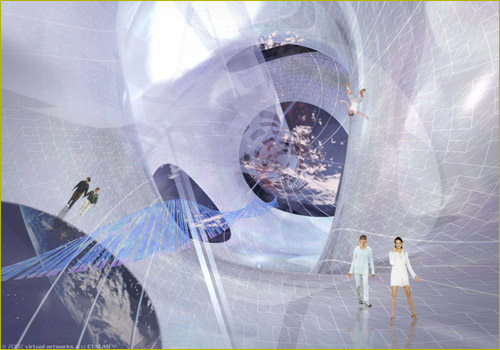
 click to enlarge image (1000x700 pixels)
click to enlarge image (1000x700 pixels)
The envelope or 'skin' of the gallery, formed from a 'smart'
material based on biomechanics, has reactive characteristics
similar to those of muscles and the nervous system. Using
state of the art electronics and pneumatics, sensors embedded
within the skin will respond to electronic signals, creating
a continuous evolution of dynamically changing form and space.
This also allows responsive control over the colour, transparency
and translucency of the envelope.
Acting as a spine and zero gravity zone, a transparent rotating
cylinder aligned along the gallery’s central axis will
be connected to the skin by a series of arms, which will also
act as circulation guides. Floor, wall and ceiling will merge
into one continuous ever-changing surface that can be walked
on by visitors at different levels of gravity. Windows, seamlessly
integrated into the skin, will expand and contract like the
lens of an eye or camera, presenting the visual wonder of
the universe, with close-up views of distant planets, the
moon, the earth and the other Tates. Sealed and pressurised,
the responsive envelope will maintain a comfortable internal
environment as it reacts to the extreme range of temperatures
in space. A spectacular café will float around the
gallery in a flexible bubble.
Pathfinding
The flexibility of the envelope allows Tate in Space itself
to develop into a solar sail, as a means of sustainable propulsion
for its solo voyages. Solar energy will also be harnessed
through the use of photovoltaic panels.
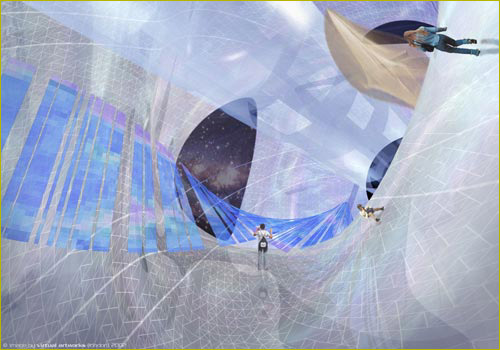
 click to enlarge image (1000x700 pixels)
click to enlarge image (1000x700 pixels)
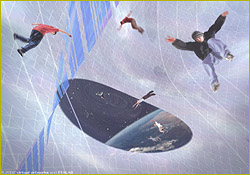 Construction
Construction
The initial phase of construction proposes a 4.5 x 9 metre
module, similar to NASA's existing TransHab, that plugs into
the ISS. Its presence established, Tate's first projects will
be relayed live to earth via webcam.
At a later stage its building components, comprising smart
materials developed by NASA, will be sent up by shuttle in
compacted form, folding out to much larger dimensions upon
arrival.
Getting there
It is envisaged that by the time Tate in Space opens, visitors
will have easy and affordable access via a sustainable and
low cost means of transport. This could make Tate in Space
the ultimate destination gallery.
Interactive
Model
ETALAB has designed an interactive interface for experiencing
the changing form of its proposal for Tate in Space. This
contains a three-dimensional model that can be accessed online
and modified in real-time. It will enable Tate’s artists
and curators to define, visualise and work within numerous
new configurations of form and gravity, be they fixed or changing,
random or prescribed. These characteristics can then be applied
to the physical Tate in Space. In due course the interface
would be developed using advanced computer programming.
As the project evolves, this curatorial tool could provide
the basis for a personalised interface for all web users.
Preferences could be stored as data files enabling visitors
to quickly switch between different versions of their own
'personal tate'.
ETALAB sees Tate in Space as a project of unparalleled potential,
developing organically in line with new technology and unfettered
artistic horizons – the possibilities are as infinite
as space itself.
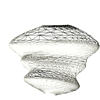 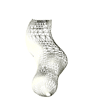 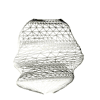 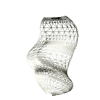 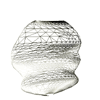
before you click
 The interactive
model is in shockwave format, you will be prompted if you
do not have the correct plug-in The interactive
model is in shockwave format, you will be prompted if you
do not have the correct plug-in
 Estimated
loading time over a 56K dialup modem connection is 15 mins. Estimated
loading time over a 56K dialup modem connection is 15 mins.
 It will
take another minute to load locally (mesh creation). It will
take another minute to load locally (mesh creation).
 To change
the form and rotation speed of the interactive model, simply
click To change
the form and rotation speed of the interactive model, simply
click
on and drag the toggles. The interior may also be explored
by swapping the
camera and using the arrow keys to navigate.
 Enable
the sound on your computer as the interactive model includes
audio. Enable
the sound on your computer as the interactive model includes
audio.
 Click
Here for ETALAB's interactive model
Click
Here for ETALAB's interactive model
For more information on ETALAB's Tate in Space scheme, go to
www.etalab.com.
© ETALAB 2002
|





